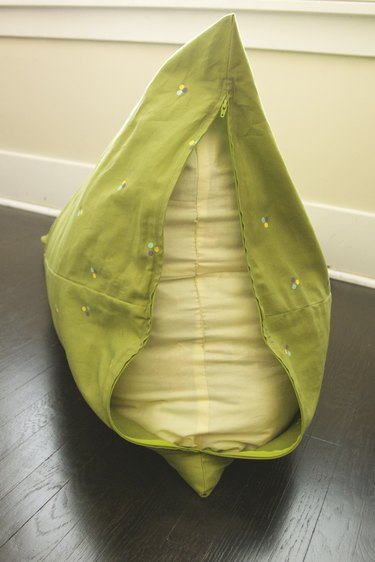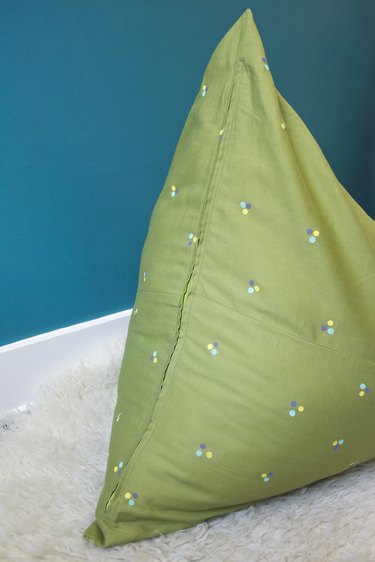Turn an empty corner of your home into a cozy reading nook with a DIY bean bag chair. This project is perfect for a beginner sewer to take her skills to the next level by inserting a zipper. Using leftover fabric scraps and polyester stuffing instead of the usual bean bag beans, it's also very affordable. Because the chair is just a rectangle, the size is easily adaptable for children or adults. Instructions are included for an inner liner and an outer shell, making it simple to wash.
Any heavy-weight fabric will work well for the outer shell and a medium-weight fabric for the liner. Lighter weight fabrics are inappropriate for the type of use the chair will get.
Video of the Day
Video of the Day
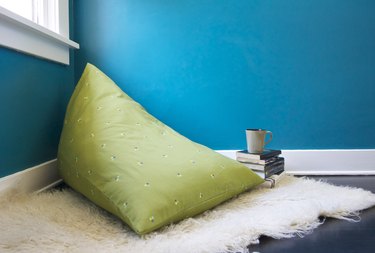
Things You'll Need
3 yards home decor or other heavy-weight fabric (main)
3 yards muslin or other medium-weight fabric (liner)
Scissors
Pins
Thread
3 bags of fabric scraps
3 pounds of polyester stuffing (or 3 12-ounce bags)
Hand needle
22-inch zipper
Zipper foot
Iron
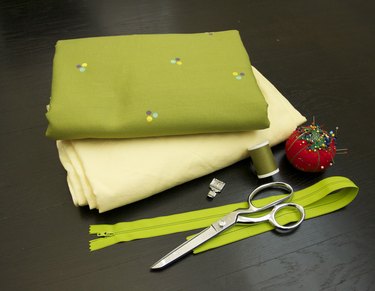
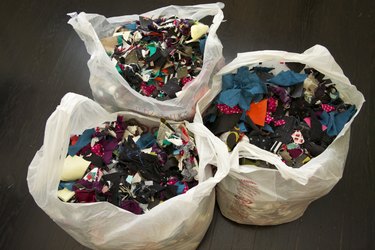
Step 1: Cut Out Fabric
Cut two 30-by-45-inch pieces of fabric from both the main and liner fabrics.
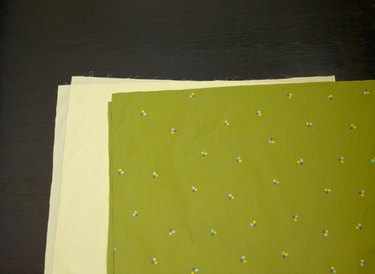
Step 2: Sew the Liner
Lay the liner pieces right sides together. Sew up one long side. When you get to the end, lower the needle into the fabric, lift the presser foot, pivot, and then lower the presser foot. Continue sewing up the short side. When you get to the end, lower the needle into the fabric, lift the presser foot, pivot again, and then lower the presser foot. Continue sewing the remaining long side. Allow for a 5/8-inch seam.
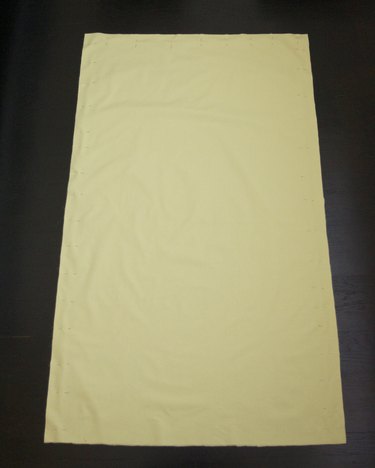
After the seams are sewn, take the open end and fold it perpendicular to the sewn short seam. Line up the pieces so the long side seams are laying on top of each other.

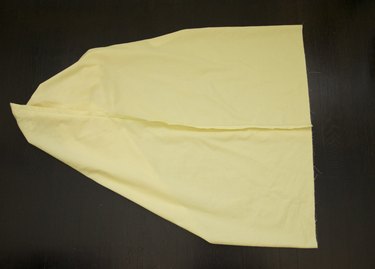
Pin the open edges together, leaving a 7-to-8-inch gap in the middle. This is where you will turn the liner right-side out and stuff the filling.
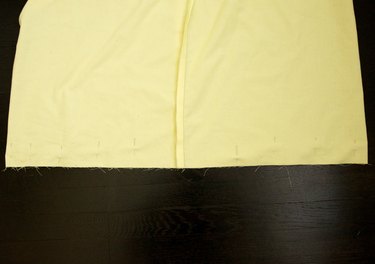
Backstitch at the beginning and end of the seams, and sew from the edge to the gap on each side with a 5/8-inch seam allowance.
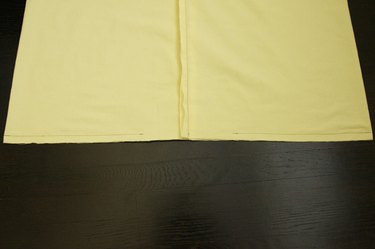
Step 3: Stuff the Liner
Turn the liner right-side out. Alternating between fabric scraps and the polyester filling, stuff the liner. Stuff really well into the corners. As you continue stuffing, press down on the scraps and polyester filling, making the stuffing dense.
Tip
If you don't have enough fabric scraps, search for them among crafters you know or local sewing groups. Many times you can find them for free from quilters who have no use for them. Any unwanted fabric is fair game. Don't be afraid to cut up ill-fitting clothes, old towels or the random uncoupled sock.

When the liner is completely stuffed, sew the gap closed.
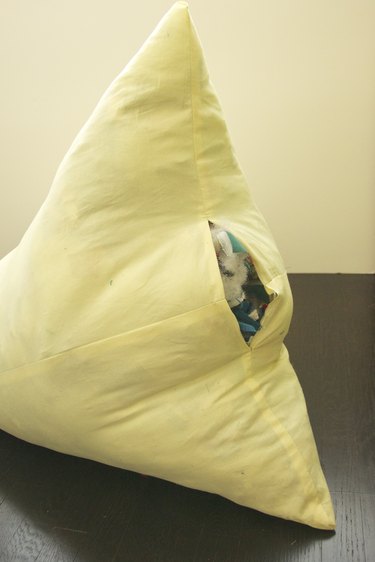
Hand sew the gap closed using a hand needle. Because the liner will not be seen, the sewing doesn't have to be neat.

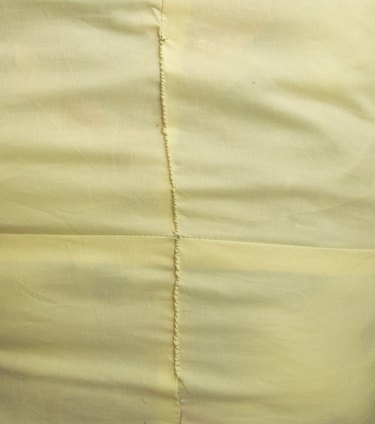
Step 4: Finish the Edges of the Main Fabric
The main fabric piece is removable for ease of care. Because it will be taken on and off and washed, it is important to finish the edges of the fabric to prevent fraying. If you have a serger, use it on the edges. If you do not, finish the edges with the overcast function on your sewing machine.
Tip
If your machine doesn't have an overcast function, use the zigzag stitch. Check out this article that instructs you on the proper technique of zigzag seam finishing.

Step 5: Sew the Sides
With right sides facing, pin the long sides together and sew with a 1/2-inch seam allowance. Then press the seam.
Step 6: Insert the Zipper
After sewing, rearrange the fabric piece so the long side seams are on top of each other.
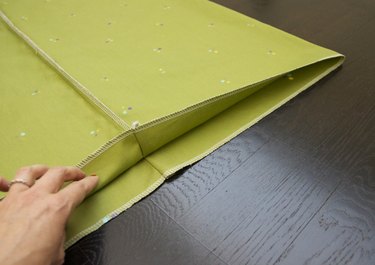
Open the zipper. Centering it, lay it face down on the right side of the fabric, lining up the edges. Pin it in place.

Switch to your zipper foot on the sewing machine. Sew straight down the zipper, lining up the edges of the zipper and fabric with the edge of the zipper foot.

When you get to the zipper pull, lower the needle into the fabric and lift the presser foot. Move the zipper pull out of the way of the presser foot. Lower the presser foot and continue sewing down the zipper.
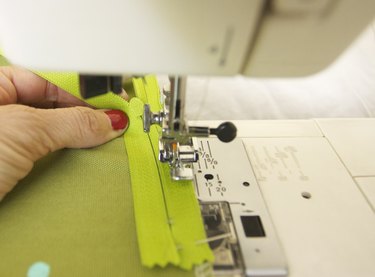
Next, pin the other side of the zipper to the other side of the fabric opening. Again, the zipper will be face down against the right side of the fabric, lined up at the edges.

Sew down the length of the zipper. Again when you get to the zipper pull, lower the needle into the fabric, lift the presser foot and move the zipper pull out of the way of the presser foot.
After both sides of the zipper are completely sewn in, give the stitching a good press, on a medium heat, from the wrong side of the fabric. You don't want to iron directly on the zipper, or it may melt.

Switch back to the regular sewing foot. Pin together the open edges outside of the zipper.
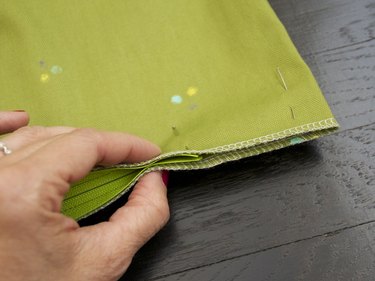
Sew the gap closed using a 1/2-inch seam allowance.
Turn the bag right-side out. On the top of the zipper, pull the fabric so it just covers the zipper teeth, and press.
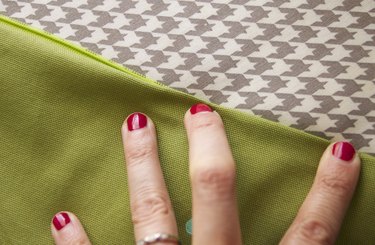
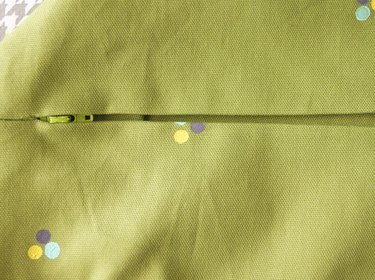
Step 7: Topstitch Around the Zipper
Switch back to the zipper foot. On the right side of the fabric, sew down the length of the zipper, moving the pull out of the way as needed. When you get to the ends, insert the needle into the fabric, lift the presser foot and turn the fabric by 90 degrees. Sew over the seam to the other zipper side, then lift the presser foot, turn 90 degrees again and continue sewing down the length of the zipper.
After sewing, replace the zipper foot with the regular foot.
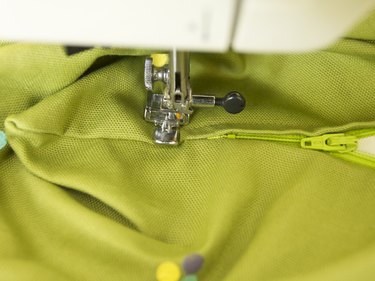
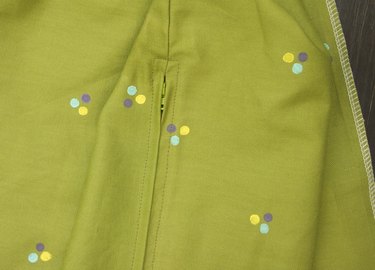
Step 8: Finish Sewing Together
Open the zipper and turn the cover inside-out. Refold so the open end is perpendicular to the zippered seam. Pin the edges together and sew with a 1/2-inch seam allowance. Press the stitching.
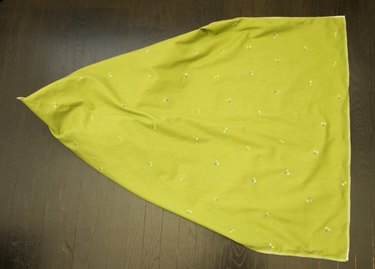
Turn right-side out.
Step 9: Stuff the Liner inside the Outside Shell
Carefully work the liner inside the outside shell and zip up. Your beanbag chair is now complete.
